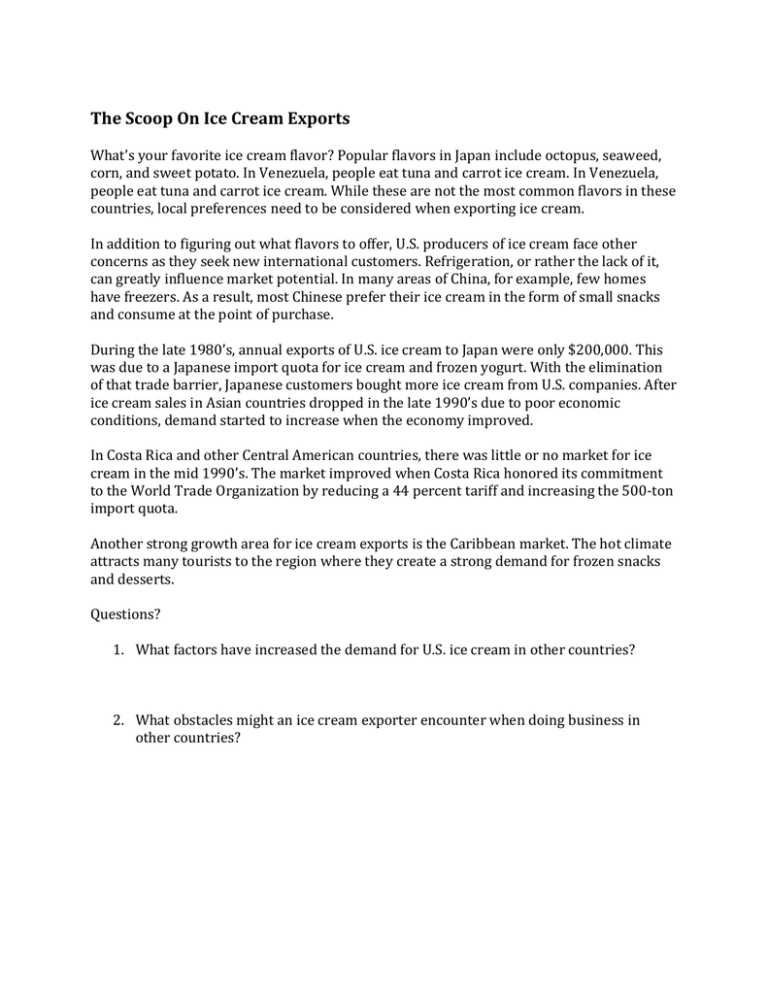The Scoop On Ice Cream Exports
advertisement

The Scoop On Ice Cream Exports What’s your favorite ice cream flavor? Popular flavors in Japan include octopus, seaweed, corn, and sweet potato. In Venezuela, people eat tuna and carrot ice cream. In Venezuela, people eat tuna and carrot ice cream. While these are not the most common flavors in these countries, local preferences need to be considered when exporting ice cream. In addition to figuring out what flavors to offer, U.S. producers of ice cream face other concerns as they seek new international customers. Refrigeration, or rather the lack of it, can greatly influence market potential. In many areas of China, for example, few homes have freezers. As a result, most Chinese prefer their ice cream in the form of small snacks and consume at the point of purchase. During the late 1980’s, annual exports of U.S. ice cream to Japan were only $200,000. This was due to a Japanese import quota for ice cream and frozen yogurt. With the elimination of that trade barrier, Japanese customers bought more ice cream from U.S. companies. After ice cream sales in Asian countries dropped in the late 1990’s due to poor economic conditions, demand started to increase when the economy improved. In Costa Rica and other Central American countries, there was little or no market for ice cream in the mid 1990’s. The market improved when Costa Rica honored its commitment to the World Trade Organization by reducing a 44 percent tariff and increasing the 500-ton import quota. Another strong growth area for ice cream exports is the Caribbean market. The hot climate attracts many tourists to the region where they create a strong demand for frozen snacks and desserts. Questions? 1. What factors have increased the demand for U.S. ice cream in other countries? 2. What obstacles might an ice cream exporter encounter when doing business in other countries?




